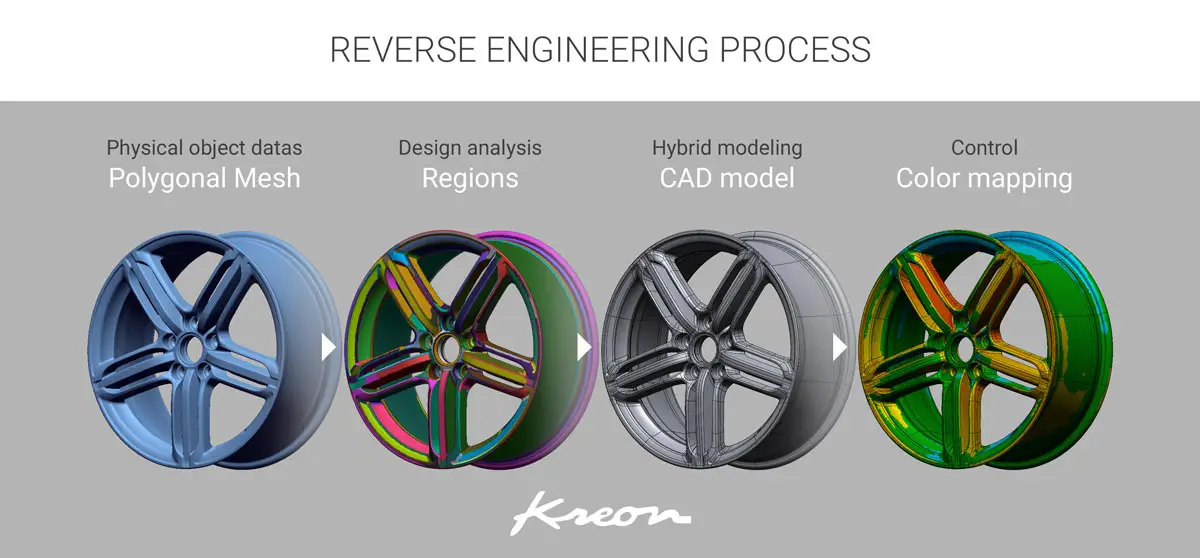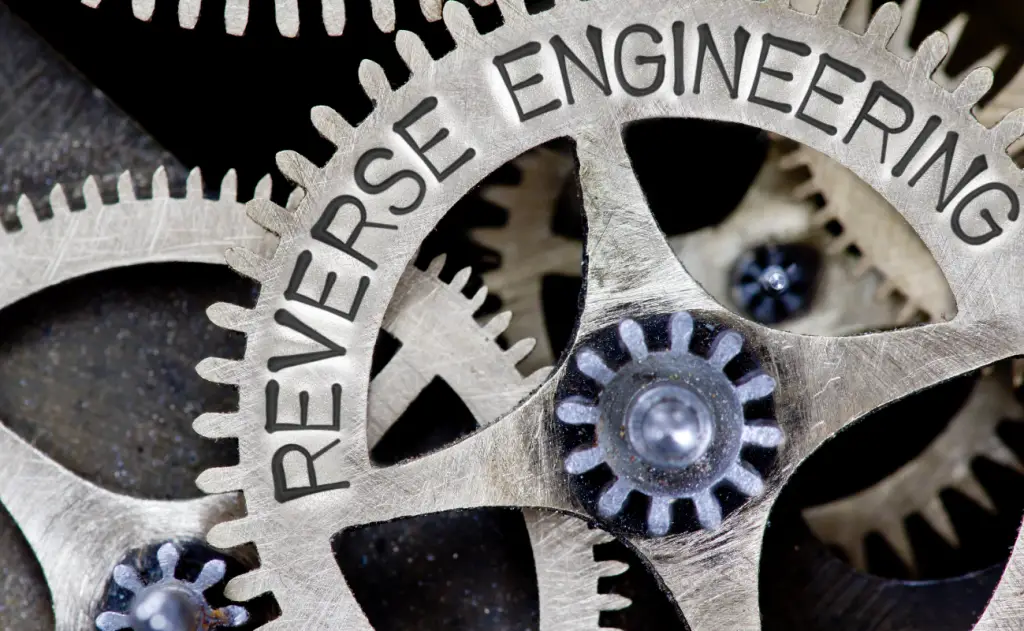Reverse Engineering in the Automotive Industry

Reverse engineering plays a crucial role in the automotive industry, enabling automakers and aftermarket suppliers to analyze, understand, and improve existing vehicle designs.

Definition of Reverse Engineering

Reverse engineering involves breaking down a system by examining its physical components and analyzing its functionality to create a functional specification and design documentation.
Applications in Automotive Industry
-
Component Analysis: To study and replicate the designs of competitor’s components, such as engine pistons, transmission gears, or suspension systems.
-
Crash Testing and Safety Assessment: By reverse engineering damaged vehicles, engineers can analyze impact patterns and improve safety features.
-
Remanufacturing and Aftermarket Parts: To develop replacement parts or aftermarket components that are compatible with original equipment designs.
-
Innovation and Design Improvement: By reverse engineering successful vehicles, automakers can identify best practices and apply them to their own designs.
Benefits of Reverse Engineering
-
Cost Reduction: By analyzing existing designs, automakers can save on design time and avoid costly mistakes.
-
Improved Performance and Reliability: Reverse engineering helps identify design flaws and inefficiencies, leading to improved product performance and reliability.
-
Competitive Advantage: By understanding competitor’s products, automakers can gain insights into their strengths and weaknesses, enabling them to develop superior designs.
-
Time-to-Market: Reverse engineering can accelerate the design and development process for new vehicles or components.
Process of Reverse Engineering
-
Data Acquisition: Physical examination, scans, and measurements are used to gather data on the target system.
-
Disassembly and Analysis: The system is disassembled to understand its structure, functionality, and materials.
-
Modeling and Simulation: CAD models and simulations are created to represent the system and its behavior.
-
Documentation and Analysis: A detailed specification and design documentation is created based on the analysis and modeling.
Conclusion
Reverse engineering is a valuable tool for automakers and aftermarket suppliers in the automotive industry. By analyzing existing designs, it enables them to innovate, improve performance, reduce costs, and gain a competitive advantage. As technology continues to evolve, reverse engineering will remain a critical tool for advancing the development of safer, more efficient, and more sustainable vehicles.## Reverse Engineering in the Automotive Industry
Executive Summary
Reverse engineering is the process of taking an existing product apart and analyzing its design and construction in order to create a new product that is similar or better. In the automotive industry, reverse engineering is used for a variety of purposes, including:
- Product development: Reverse engineering can be used to create new products that are similar to or better than existing products on the market.
- Cost reduction: Reverse engineering can be used to identify ways to reduce the cost of manufacturing a product.
- Quality improvement: Reverse engineering can be used to identify and correct flaws in a product’s design or construction.
- Product safety: Reverse engineering can be used to identify and eliminate potential safety hazards in a product.
- Competitive intelligence: Reverse engineering can be used to gain insights into the design and construction of competing products.
Introduction
Reverse engineering is a powerful tool that can be used to improve the quality, reduce the cost, and increase the safety of automotive products. By taking the time to understand how existing products are made, automotive engineers can create new products that are better than ever before.
FAQs
Q: What are the benefits of reverse engineering in the automotive industry?
A: Reverse engineering can be used to improve the quality, reduce the cost, and increase the safety of automotive products.
Q: What are some of the challenges of reverse engineering in the automotive industry?
A: Some of the challenges of reverse engineering in the automotive industry include the complexity of modern vehicles, the need for specialized equipment, and the cost of reverse engineering.
Q: What are some of the applications of reverse engineering in the automotive industry?
A: Reverse engineering is used in a variety of applications in the automotive industry, including product development, cost reduction, quality improvement, product safety, and competitive intelligence.
Subtopics
Materials
Reverse engineering materials involves closely studying and analyzing the characteristics, composition, and properties of a particular material used in an automotive component or system. The goal is to determine the exact composition of the material, its engineering properties, and its performance under various conditions.
- Chemical analysis: Determines the elemental composition of a material using techniques like X-ray fluorescence (XRF) or inductively coupled plasma mass spectrometry (ICP-MS).
- Mechanical testing: Evaluates the mechanical properties of a material, such as its strength, hardness, and toughness.
- Microstructural analysis: Examines the internal structure of a material, including its grain size, phase distribution, and defect characteristics.
Components and Subsystems
This aspect of reverse engineering focuses on understanding the design, functionality, and interrelationships of individual components and subsystems within an automotive system. The aim is to deconstruct the system into its constituent parts, analyze their interactions, and determine their specific roles in the overall system performance.
- Functional analysis: Determines the intended purpose, input/output relationships, and operating principles of each component.
- Dimensional measurement: Accurately measures the physical dimensions, tolerances, and geometric features of components using tools like coordinate measuring machines (CMMs) or laser scanners.
- Disassembly and reassembly: Involves carefully disassembling and reassembling components to study their assembly sequence, fit, and potential failure points.
Manufacturing Processes
Reverse engineering manufacturing processes entails examining and understanding the techniques and methodologies employed to produce a particular automotive component or system. The objective is to identify the sequence of operations, equipment used, and process parameters that contribute to the final product’s characteristics.
- Process mapping: Documents the step-by-step sequence of operations involved in manufacturing a component, including forming, machining, assembly, and finishing.
- Equipment identification: Determines the specific machinery, tooling, and fixtures used in each manufacturing step.
- Parameter optimization: Analyzes the process parameters, such as temperature, pressure, and feed rates, to identify their impact on product quality and efficiency.
Simulation and Modeling
Simulation and modeling play a significant role in reverse engineering by providing virtual representations of automotive components and systems. These models enable engineers to analyze and predict the behavior of products under various operating conditions without the need for physical prototyping.
- Computer-aided design (CAD): Creates detailed 3D models of components and assemblies, allowing for virtual design evaluation and optimization.
- Finite element analysis (FEA): Simulates the physical behavior of components under applied loads and stresses, providing insights into their structural integrity and performance.
- Computational fluid dynamics (CFD): Models fluid flow and heat transfer within automotive systems, enabling engineers to optimize cooling, aerodynamics, and combustion processes.
Performance and Testing
Performance and testing involves evaluating the actual performance of reverse-engineered products against their intended specifications and requirements. This stage ensures that the reverse-engineered product meets the desired functional, safety, and quality standards.
- Functional testing: Assesses whether the product performs its intended functions as per the design specifications.
- Durability testing: Evaluates the product’s ability to withstand various environmental and operating conditions over an extended period.
- Safety testing: Conducts tests to ensure that the product meets regulatory safety standards and minimizes potential hazards.
Conclusion
Reverse engineering is a powerful tool that can be used to improve the automotive industry. By taking the time to understand how existing products are made, automotive engineers can create new products that are better than ever before. As technology continues to evolve, reverse engineering will become even more important in the development of new and innovative automotive products.
Keyword Tags
- Reverse engineering
- Automotive industry
- Product development
- Cost reduction
- Quality improvement
- Product safety
- Competitive intelligence
